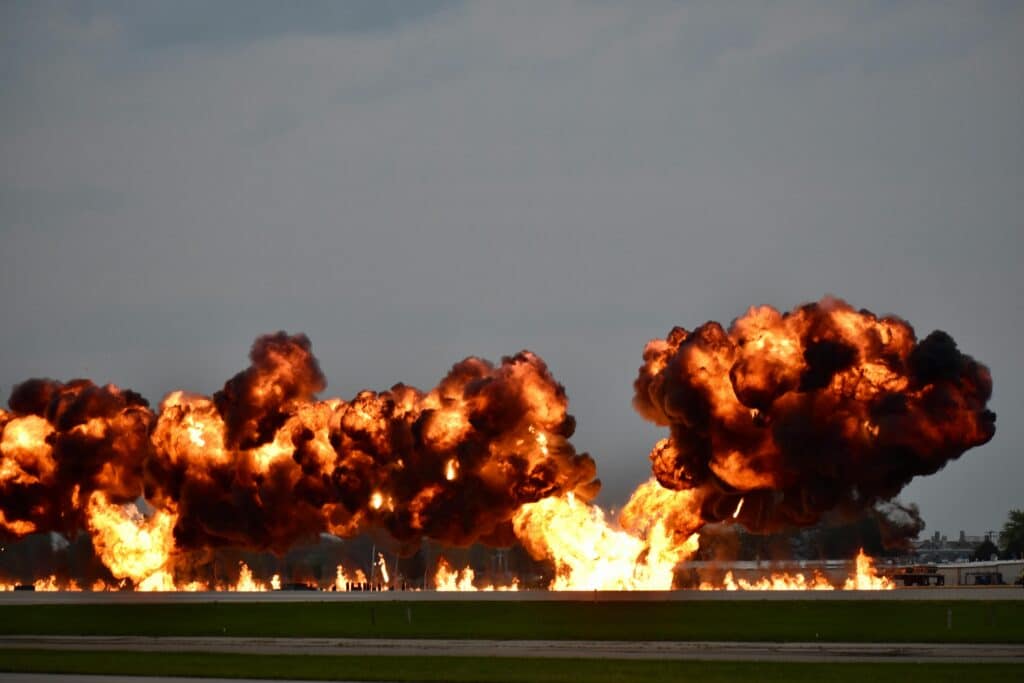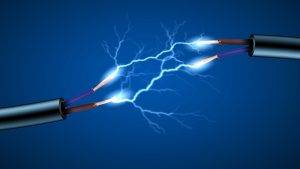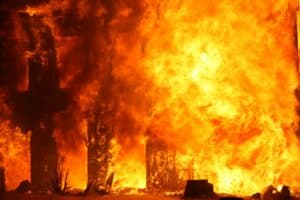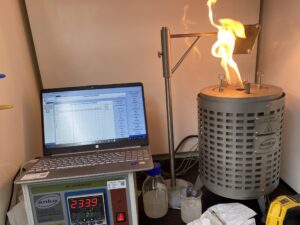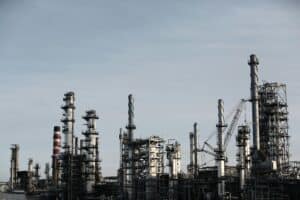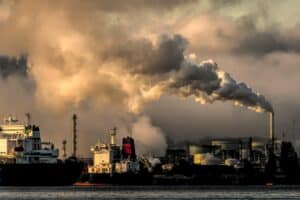We also offer
What Is Fire and Explosion Hazard Analysis (FEHA)?
Fire and Explosion Hazard Analysis (FEHA) is a structured risk assessment used to identify and evaluate potential fire and explosion hazards in industrial settings. Its main goal is to protect people, property, and the environment by assessing risks and implementing effective prevention and mitigation strategies.
FEHA is essential in high-risk industries such as:
-
Chemical manufacturing
-
Oil and gas production
-
Refineries
-
Storage and processing facilities
In many cases, FEHA is a regulatory requirement to ensure that operations are designed, operated, and maintained with safety as a top priority. Compliance with OSHA’s Process Safety Management (PSM) standards (29 CFR 1910.119), HAZWOPER (29 CFR 1910.120), and industry codes like NFPA ensures legal and operational safety.
Why Is Fire and Explosion Hazard Analysis (FEHA) Important?
Conducting FEHA helps facilities:
-
Prevent catastrophic fires and explosions
-
Evaluate fire suppression and detection systems
-
Improve emergency response planning
-
Ensure compliance with OSHA, NFPA, and EPA standards
-
Maintain operational continuity and minimize downtime
-
Enhance overall workplace safety and culture
Key Steps in Fire and Explosion Hazard Analysis
1. Identify Fire and Explosion Hazards
-
Flammable liquids, gases, dusts, and vapors
-
Ignition sources: hot surfaces, electrical systems, static electricity, open flames
-
Equipment, pipelines, storage tanks, and dust-producing processes
A complete hazard inventory is created to document all potential sources.
2. Evaluate Likelihood and Severity
-
Assess how likely each hazard is to occur
-
Estimate the severity of potential outcomes (injury, damage, downtime, etc.)
-
Use qualitative or quantitative methods to prioritize risks
3. Implement Prevention and Protection Measures
-
Engineering Controls: Ventilation systems, explosion-proof equipment, leak detection
-
Administrative Controls: Safety procedures, training programs, maintenance routines
-
PPE Requirements: Protective clothing, gloves, helmets, and goggles for high-risk areas
4. Monitor and Review
-
Perform regular inspections, audits, and tests
-
Update FEHA after changes in operations, materials, or regulations
-
Verify effectiveness of control measures
5. Document and Report
-
Maintain clear records of all findings, decisions, and safety improvements
-
Use documentation to demonstrate compliance and support safety training
Why Work with Prime Process Safety Center?
At Prime Process Safety Center, we specialize in delivering thorough, reliable Fire and Explosion Hazard Analyses tailored to your industry needs.
What Sets Us Apart:
-
Expertise in Fire and Explosion Dynamics: Our safety engineers understand the science behind fire and explosion events.
-
Facility-Specific Risk Assessments: Every analysis is customized to your facility, materials, and processes.
-
Advanced Tools and Techniques: We use state-of-the-art modeling and risk assessment software.
-
Mitigation-Focused Recommendations: We go beyond hazard identification to help you implement realistic safety solutions.
-
Full Regulatory Compliance: We align our work with OSHA, NFPA, EPA, and local standards.
-
Hands-On Training and Support: We train your team to recognize and respond to hazards.
-
Proven Success: A strong track record of helping clients across the process industries reduce risks and improve safety.
-
Continuous Improvement: We stay current with emerging safety technologies and standards.
-
Detailed Reporting: Our documentation supports internal decision-making and regulatory reporting.
-
In-House Testing Lab: Our lab provides accurate, defensible data on materials, reactions, and process risks, supporting all FEHA evaluations.
FAQ
1. What is Fire and Explosion Hazard Analysis (FEHA)?
FEHA is a systematic evaluation to identify and assess potential risks of fire and explosion in industrial settings, primarily in processes involving flammable materials.
2. Why is FEHA important in process industries?
It's crucial for safeguarding against catastrophic incidents, protecting personnel, ensuring operational continuity, and complying with safety regulations.
3. What industries typically need FEHA?
Industries handling flammable gases, liquids, dusts, or chemicals, such as petrochemical, pharmaceutical, and manufacturing sectors, often require FEHA.
4. What are the key components of FEHA?
FEHA typically includes identifying potential ignition sources, evaluating combustible materials, assessing the effectiveness of existing safety measures, and proposing mitigation strategies.
5. How often should FEHA be conducted?
Regularly, especially when there are changes in processes, equipment, or materials, or following any incident. Many regulations suggest a review at least every five years.
6. Who should perform FEHA?
Qualified professionals with expertise in fire safety, chemical engineering, or industrial processes, often including external specialists for unbiased assessments.
7. What role does FEHA play in regulatory compliance?
FEHA helps ensure compliance with various safety standards and regulations, like OSHA’s Process Safety Management and NFPA codes.
8. Can FEHA improve operational efficiency?
Yes, by identifying potential hazards and optimizing safety measures, FEHA can lead to more efficient and uninterrupted operations.
9. What happens if FEHA identifies significant risks?
The facility must address these risks promptly, typically by implementing recommended safety improvements or modifying operational processes.
10. Does FEHA involve training for personnel?
Yes, part of FEHA includes training personnel in fire and explosion safety, emergency response, and best practices in handling flammable materials.
11. What is fire?
Fire is a chemical reaction that occurs when a combustible material combines with oxygen and releases heat and light. The result of this chemical reaction is the emission of flames, light, heat, and the production of smoke and other combustion byproducts. Fire can take various forms, including open flames, smoldering embers, and even explosions under certain conditions. It is a rapid oxidation process that typically involves the following elements:
- Fuel: This is the material that burns and provides the energy for the fire. Fuels can be solid (wood, paper), liquid (gasoline, oil), or gas (natural gas, propane). The type of fuel used can greatly influence the characteristics of the fire.
- Oxygen (O2): Oxygen is necessary for combustion to occur. It is the oxidizer that combines with the fuel to release energy. In the Earth's atmosphere, oxygen is readily available and makes up about 21% of the air.
- Heat: Heat is the energy source that initiates and sustains the combustion process. It raises the temperature of the fuel to its ignition point, at which it starts to release flammable gases that can burn.
- Chemical Chain Reaction (Free Radicals): Once the fuel is heated to its ignition temperature, it breaks down into free radicals, which can react with oxygen and produce more heat. This chain reaction continues until one of the elements (fuel, oxygen, or heat) is removed or the fuel is consumed.
12. What is explosion?
An explosion is a sudden and violent release of energy, typically in the form of a shockwave, heat, light, and noise. It occurs when there is a rapid and uncontrolled release of gases, energy, or other materials, often accompanied by a large increase in pressure and a release of tremendous force. The characteristics of an explosion, including its intensity, duration, and potential damage, depend on several factors, including the amount and type of material involved, the confinement of the explosion, and the environmental conditions. Explosions can have devastating effects, causing structural damage, injuries, and loss of life. Explosions are of significant concern in various industries, including manufacturing, mining, oil and gas, and chemical processing. To prevent and mitigate explosion hazards, safety measures, such as the use of explosion-resistant equipment, safety barriers, and safety protocols, are implemented. Understanding the causes and consequences of explosions is essential for effective risk management and safety planning.


